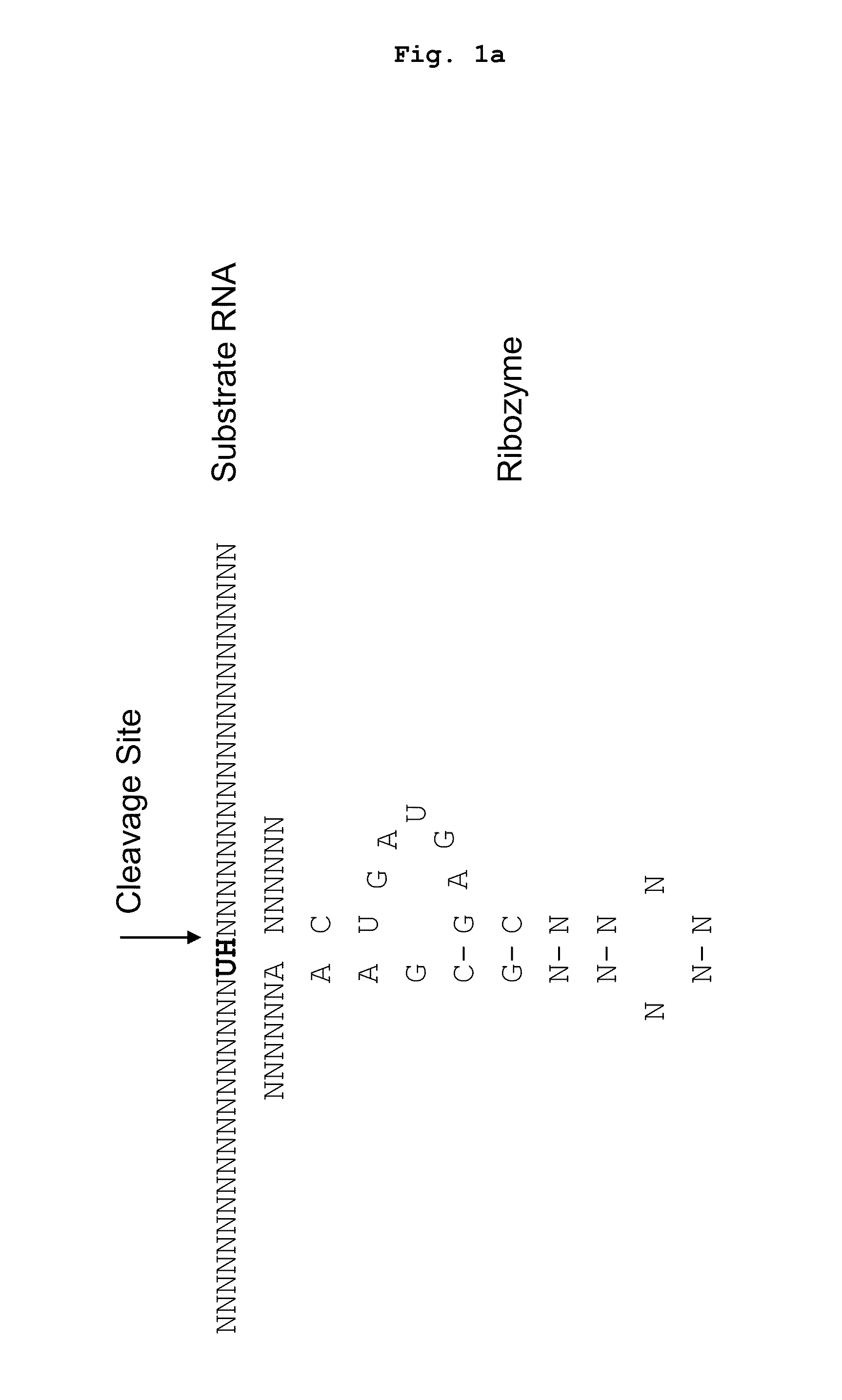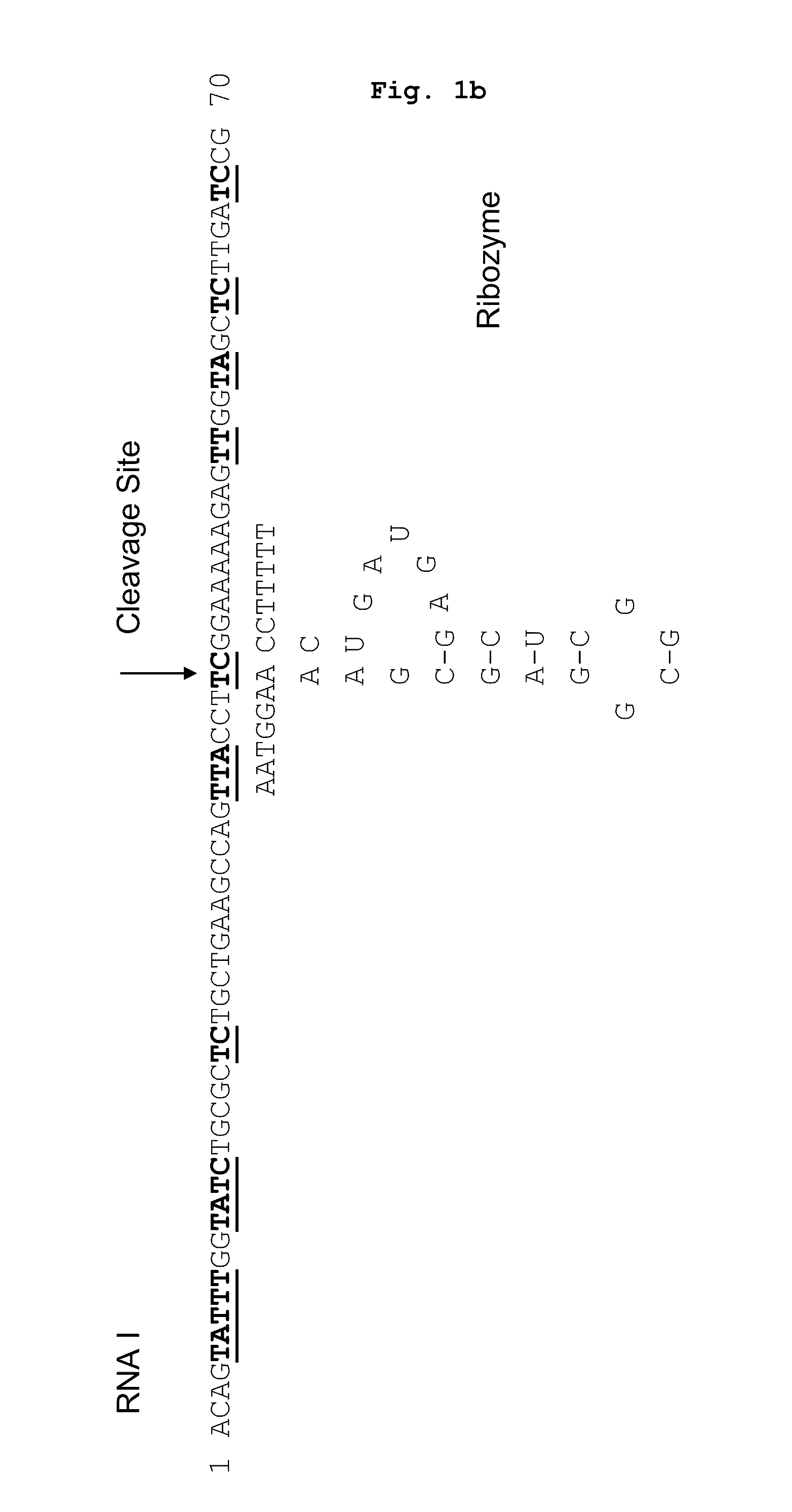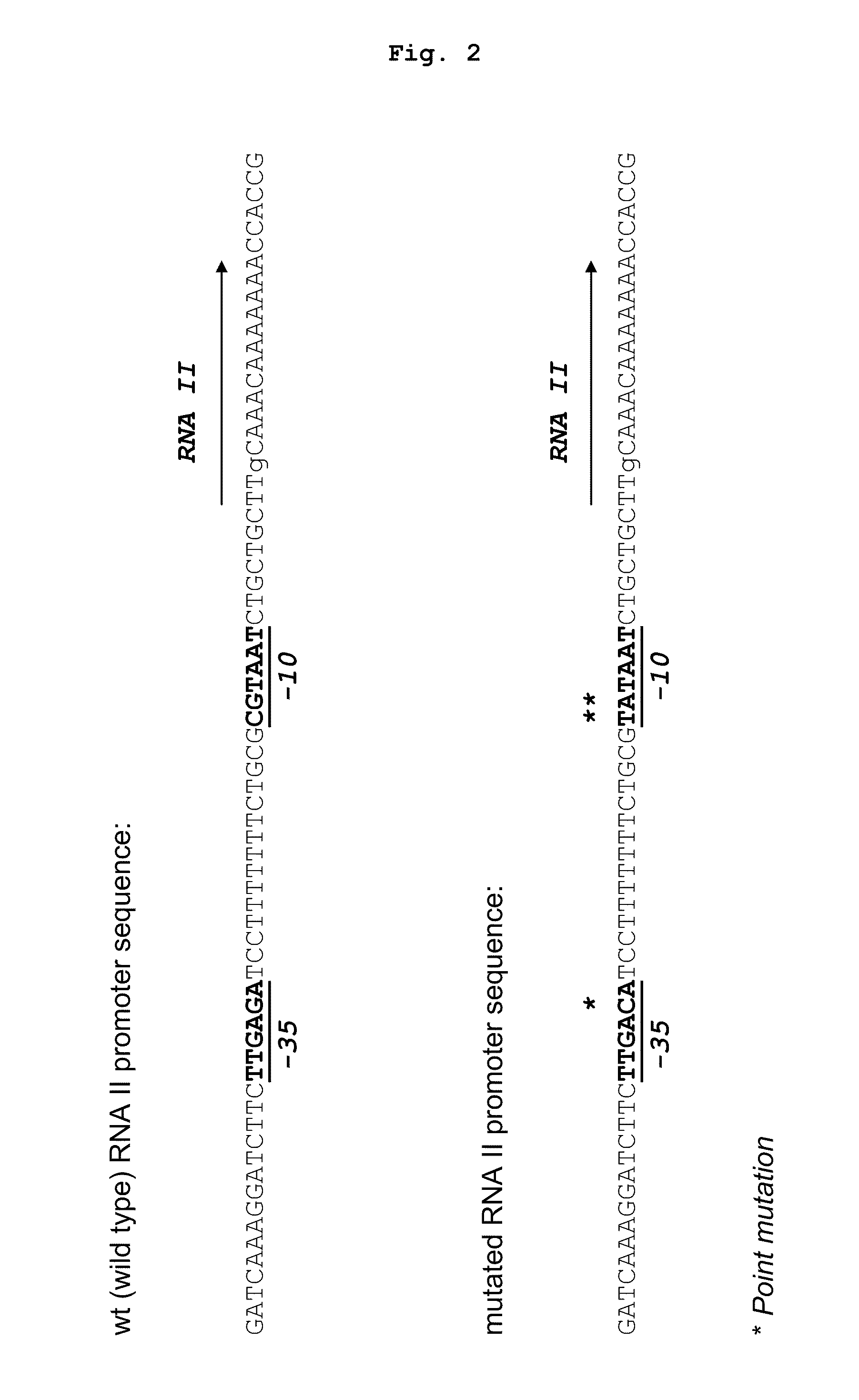Method for controlling plasmid copy number in e.coli
a technology of plasmid copy number and e. coli, which is applied in the field of controlling the copy number of plasmid in e. coli, can solve the problems of hampered cell growth or loss of plasmid, low pcn and low metabolic load, and the repressor is unable to prevent the transcription of lac promoters
- Summary
- Abstract
- Description
- Claims
- Application Information
AI Technical Summary
Benefits of technology
Problems solved by technology
Method used
Image
Examples
example 2
[0126]PCN Control by Inhibiting Plasmid-Derived RNAI by a Mutated tRNA Transcribed from the Host's Genome
[0127]Object of these experiments, which exemplify embodiment a) of the invention, is to provide, in the host's genome, an inducible tRNA molecule that, by point mutations introduced into the acceptor stem, is inefficiently charged with amino acids and thus remains essentially unloaded. By inducing the promoter that controls expression of said tRNA, inhibition of plasmid-derived RNAI occurs and replication increases. In this example, the inducer is being added later in the fed-batch process and does need to be metabolized by the host.
[0128]FIG. 6a schematically shows this embodiment: A DNA sequence encoding a mutated version of the tRNA that is normally charged with alanine, is inserted in the bacterial chromosome and transcribed under the control of an inducible promoter. When the inducer is present, tRNA is transcribed and binds to RNAI derived from the plasmid's origin of repl...
example 3
[0133]Combination of PCN Control with Antibiotic-Free Selection
[0134]The PCN control system in this experiment corresponds to embodiment b). FIG. 7 schematically shows the set-up of this experiment: The promoter of RNAI on the plasmid is abolished by targeted point mutations to ensure that no RNAI is transcribed from the plasmid and PCN is exclusively controlled by the genome-encoded RNAI molecule. A sequence encoding RNAI is integrated in the bacterial chromosome and transcribed under control of an inducible promoter. When the inducer is present, RNAI is transcribed from the genome, binds to plasmid-derived RNAII, thereby controlling plasmid replication. In addition, an RNA molecule that mimics RNAI in that it has its structure, but is different in sequence (designated “RNAI-like” in FIG. 7), is transcribed, under control of an constitutive or inducible promoter, from a locus on the plasmid that is different from the ori. This RNAI-mimicking molecule binds to an mRNA derived from t...
PUM
| Property | Measurement | Unit |
|---|---|---|
| Biodegradability | aaaaa | aaaaa |
| Toxicity | aaaaa | aaaaa |
Abstract
Description
Claims
Application Information
 Login to View More
Login to View More - R&D
- Intellectual Property
- Life Sciences
- Materials
- Tech Scout
- Unparalleled Data Quality
- Higher Quality Content
- 60% Fewer Hallucinations
Browse by: Latest US Patents, China's latest patents, Technical Efficacy Thesaurus, Application Domain, Technology Topic, Popular Technical Reports.
© 2025 PatSnap. All rights reserved.Legal|Privacy policy|Modern Slavery Act Transparency Statement|Sitemap|About US| Contact US: help@patsnap.com



